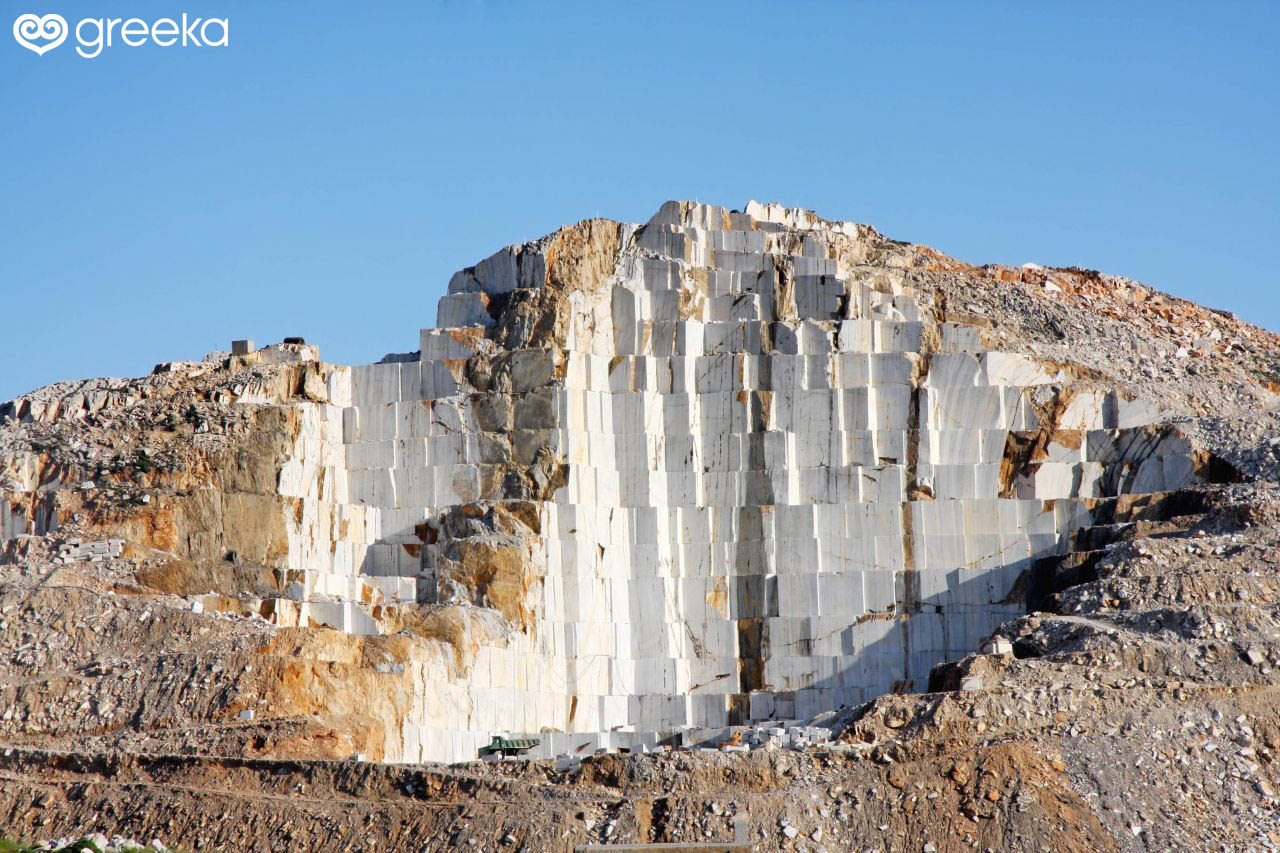Naxos Marble

Greece is a country that has bestowed several incredible marble monuments and sculptures to the world. Being the first Greek island to work with marble, Naxos led the way regarding the creation of fantastic and memorable structures. The island also gave birth to extremely skilled and sought-after stone carvers and craftsmen. The craftsmen of Naxos were the first to build entire structures out of pure and unalloyed marble.
Legend has it that Byzes of Naxos and his son Euergos were the first craftsmen to make marble tiles. In ancient times, marble in Naxos was extracted from the quarries of Apollonas. The marble was white with a light ash-colored shade with darker zones, while sometimes ash-colored grains were scattered all over the surface.
The white marble of Naxos is of excellent quality and was not used only for construction, but for massive sculptures as well. Naxos is home to the colossal marble wonder called the Portara, part of the unfinished temple to Apollo built during the reign of the tyrant Lygdamis. Other famous works include the huge nude male statues called kouroi, dating back to the 7th Century BC, the Demeter Temple with a marble roof built around the mid-6th Century, and the Sanctuary of Dionysos.
The large statues of nude men and clothed women found in Naxos are among the earliest of their type found anywhere in Greece.
The most noteworthy example is the statue of Artemis, built in 650 BC, exhibited at the National Archaeological Museum in Athens. However, the most impressive works were the unfinished ones. These were massive, "taller than the average tall man" statues, dating after the Homeric epics.
On touring other ancient sites on the island, you will find marble quarried on Naxos and then sent to other countries. Also, around the 7th and 6th Centuries BC, when marble sculpture was at its peak, Naxos exported exquisite marble structures to other parts of Greece, like the Sphinx at the Delphi Sanctuary, the lions of Delos, and the 25-feet-tall marble Apollo in Delos.
When talking about marble in Naxos, one cannot miss out on the village of Apiranthos at the foothill of mountain Fanari, also popularly called the "Marble Village". Almost everything in this picturesque village is made of marble. One can admire charming marble buildings like the Tower of Zevgoli and the Tower of Bardani. The influence of marble on Apiranthos is so big, that one can even see streets paved with marble tiles here. You can visit marble workshops and sculpture studios across the island to get a hands-on, personalized experience of how marble masterpieces are created.
If you do not have the time to check out all the marble wonders in Naxos, you can visit the marvelous exhibition of white marble figurines in the Archaeological Museum of Naxos instead.
Throughout the island of Naxos, churches and monasteries are filled with marble sculptures that add immensely to their beauty. Lesser quantities of marble were turned into whitewash for buildings.
The kind of marble quarried today is a little different and can be divided into three categories: White, the top-tier of the three, semi-white, the most commercial, and gray. The operating quarries are the ones of Kinidaros and are known as Sanidas (the oldest quarry), Zas (housing three quarries), and Bolibas (the largest quarry). Noteworthy is the fact that unlike in other areas, marble in Naxos is situated on a vertical slope and not a horizontal one.
Time may have moved forward, but the essence of Naxos remains the same.



